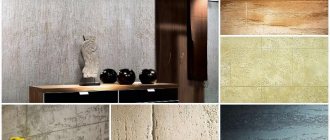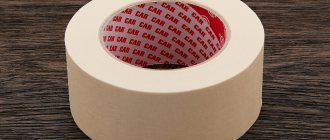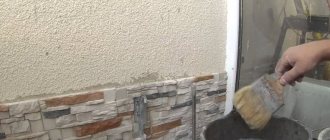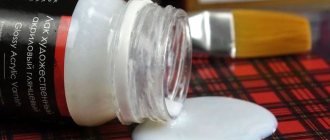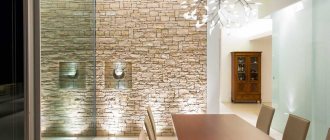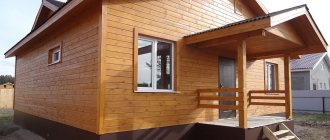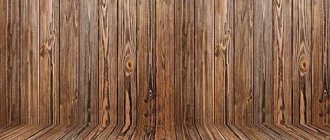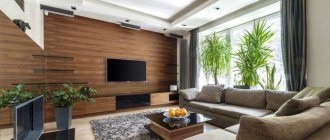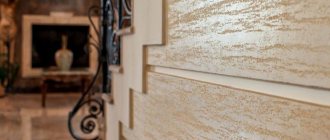Travertine is a sandy-golden stone that has an uneven texture. This material is in demand in decorative construction work. The technology of installing travertine on the facade is becoming increasingly popular today.
Finishing the facade of a house with this stone allows you to create an excellent result. Travertine can be either natural or artificial. By its properties, the stone is very strong and durable, so it can confidently serve up to several hundred years.
What is travertine
Travertine, or calcareous tuff, is a brittle rock that is formed from calcium carbonates. It has a large-porous structure and a rough surface. The coloring is uneven, with streaks and bizarre patterns.
The conditions of formation and the presence of impurities determine the color of the mineral. A completely white stone is very rare. This color means that during the formation of the rock it was almost not affected by environmental factors.
Predominant shades:
- grey;
- beige;
- yellow.
After extraction from the deposit, the color of the rock may change. This is due to the oxidation of metal particles. For example, gray travertine takes on a darker shade due to iron oxidation.
Brown and black colors indicate high strength.
View this post on Instagram
Posted by Elegant Stone (@elegant_stone.ru) Jul 16, 2022 at 1:32 PDT
Dimensions of facade tiles
The process of installing travertine on the walls of a house is the same as that of granite; depending on the type of facade system, you choose either fastening to an anchor subsystem, or directly to a concrete base using a cement-adhesive composition.
Of course, the smaller and thinner the finishing tile, the easier it is to work with, but strips or slabs of travertine are often used to minimize seams. The sizes of modular travertine tiles available for sale are standard for most stones:
- 600*300*20 (30) mm.
- 600*600*20 (30) mm.
- Band
- 303*305*12 mm.
- Slab
- It is possible to cut tiles to resemble Roman masonry or to any other size
Formation and extraction of material
The stone is formed from carbonated water sources during the precipitation of calcium carbonate contained in them. In this case, carbon dioxide is released from the water. In caves where underground water flows, the rock forms stalactites - growths hanging from the ceiling, and stalagmites - sinter formations growing from the bottom.
Industrial deposits:
- Kyrgyz;
- Tajikistan;
- Armenian;
- Azerbaijani;
- German;
- Italian.
Kyrgyz travertine is valued for its greatest strength. Iran supplies the breed in yellow and red shades. In Uzbekistan, a mineral with the lowest organic content is mined.
Russian deposits are located in the Leningrad region near Pyatigorsk and Kamchatka.
Extraction is carried out in several ways:
- the most expensive is cutting out pieces from a solid mass, with minimal losses;
- explosive method - many pieces unsuitable for construction remain;
- splitting a solid mass by pumping air under pressure into cut channels - you cannot control the size of the pieces.
Further processing is carried out during construction - the pieces are brought to the required size and polished.
There is a locality called Pamukkale in Turkey. There, travertine deposits on the mountain slopes are a protected natural monument, a UNESCO World Heritage Site.
To watch a video about the extraction and processing of stone at the factory:
What does it look like
The description of the stone includes the following characteristics:
- Rough porous, not particularly heavy or dense agglomerates.
- Unevenly colored, streaks and patterns form what is called “harmony of chaos.”
- The shades are mostly beige, but there are gray, sand, even brown, black and red. The color depends on the conditions in which the rock was formed and the impurities in its composition.
The elite is considered a rare pure white stone. And black and brown are the most durable and wear-resistant.
However, the shade of the extracted raw materials may change: metal inclusions oxidize in air. The gray stone turns black, the beige stone looks dark sand.
Features of real stone
Natural travertine is formed gradually, layer by layer. Constant pressure leads to increased strength, despite the porous structure. Untreated stone is sensitive to chemicals and is damaged by sharp objects.
The artificial material is created from travertine chips, mixing it with various viscous substances: glue, cement, silicate mixture. This is how travertine tiles and plaster are obtained. The difference between artificial materials is their greater strength, resistance to chemicals, and the ability to be painted in different colors.
Application technology
The imitation can be similar to polished or untreated stone, or a stone wall made of blocks. For each of these cases, travertine plasters and types of application of the compositions vary. The imitation of massive polished stone is performed using the Venetian plaster technique. Below are other application methods.
Continuous application
When creating Traventino, the decorative layer can be applied in different ways. In general, the application of such plaster is very similar to the technology of plaster called the world map.
The three most common methods:
- The prepared solution is applied with a trowel or spatula in an even layer up to 2 mm. Then the coating is treated with a hard brush or a wide brush, which imitates a porous surface. Porous areas at this stage can account for up to 80% of the area. These percentages will decrease after smoothing the plaster layer.
- The solution is transferred to the wall with the end of a hard brush using poking movements. The relief surface of the stone is created immediately. This method is somewhat more laborious and slower.
- The stone surface is imitated by trimming the applied mortar with the working surface of a trowel, on which the mixture is distributed with a spatula. The touch-free method creates the required surface roughness.
After 15-20 minutes, the surface of the layer is slightly smoothed with a clean, damp trowel. This is done so that smooth areas are mixed with rough ones. The direction of movement of the trowel should be multidirectional.
Partial application
There is a way in which decorative plaster with a travertine effect may not be completely applied.
The work sequence is as follows:
- contact primer with quartz filling is applied tightly (without gaps) onto the prepared wall with a roller. It is even better if two layers are applied, since in this case the soil will not completely overlap on top. If the coating is planned to be two-color, then the primer can be tinted.
- The working composition is applied to the dried soil. This is done with a trowel using the trimming method. A small amount of the mixture is applied to the trowel with a spatula and evenly distributed, which is transferred to the wall using a “touch” technique in places (not over the entire surface). After drying begins, the mixture is smoothed and redistributed in different directions with the edge of the trowel. The trowel is held at an angle of up to 30 degrees to the wall.
- After the coating has dried, the wall is cleaned of flaws with sandpaper or using mechanical means.
Physico-chemical properties of travertine
In appearance and properties the stone is similar to limestone. Only their structure differs - travertine is more spongy. According to the chemical formula, the mineral is calcium carbonate - → {\displaystyle \to } CaCO3. Physical properties:
- porosity;
- softness;
- density 1.8-2.5 grams per cubic centimeter.
Due to its low density, the stone is light, easy to cut and polish.
Properties of the rock that make it suitable for construction:
- ease of processing;
- wear resistance;
- light weight;
- resistance to frost and heat;
- moisture resistance;
- environmental friendliness;
- low price.
Travertine has thermal insulation properties and has low sound conductivity due to its porous structure.
There are several disadvantages - it gets dirty quickly, is unstable to acids and alkalis, and requires special care. Therefore, they prefer to use the mineral for interior decoration.
How to care
The Colosseum is already two thousand years old, St. Peter's Basilica is several centuries old. But then there was no gasoline, chemicals or similar destructive factors on Earth.
Today, travertine products need to be carefully looked after:
- To remove dirt and stains, the use of abrasives, hard brushes, and household chemicals is prohibited.
- Even regular vinegar doesn't work.
- Remove dirt with a soft cloth and warm soapy water. Wipe dry immediately.
Facades and other types of exterior require hermetically sealed protection.
Areas of application of travertine
The main area of application of stone is construction. It is used to decorate building facades and interior decoration. In agriculture, travertine chips are used for liming the soil.
Stone has been used to build buildings since before our era. Famous surviving buildings include the Roman Colosseum and St. Peter's Vatican Basilica.
Travertine as a finishing material
Travertine tiles are used for interior decoration:
- wall decoration;
- mosaic layouts on the floor;
- design of pool walls;
- laying the floor and walls of the bathroom.
For this purpose, natural or artificial stone is used. The material is well suited for decorating kitchen or bathroom floors because it is moisture resistant and has a low degree of slip.
Travertine plaster is also used to decorate walls. It has advantages over the usual one - fireproof, moisture-resistant, durable, resistant to damage.
By painting plaster in different colors, you can achieve amazing texture and create a unique interior.
Plaster is laid in two ways:
- full plastering - when the surface is completely treated, wait until it dries and apply a pattern or paint;
- partial plastering - involves a combination of treated and untreated surface areas.
Laying travertine plaster requires skill, so it is better not to do it yourself without experience.
Watch detailed video:
Travertine in the interior
The breed has been used for interior decoration since ancient times. There are several directions on how you can decorate a room:
- classic - they lay out mosaics on the floor and walls, decorate stairs and fireplaces;
- Roman style - decorate arches, window and doorways, lay out figures on the floor.
Travertine from different countries is used for finishing. Turkish is distinguished by a variety of pastel shades. It is preferable to use it to decorate the living room and hallway. Iranian stone has bright yellow and red hues. It looks good in the bathroom, kitchen, and on the balcony.
Travertine products are also interior decoration:
- stair balusters;
- mantels;
- floor vases;
- kitchen countertops.
It is recommended to decorate the hallway floor with artificial stone, because natural stone is more sensitive to damage.
View this post on Instagram
Publication from the Master of Repair and Decoration ?? (@mastera_remonta_i_decora) Jul 20, 2022 at 9:36 am PDT
View this post on Instagram
Publication from the Master of Repair and Decoration ?? (@mastera_remonta_i_decora) Jul 20, 2022 at 9:37 am PDT
To watch a video review on the topic:
Mineral in the exterior of buildings
Travertine is used less frequently for the decoration of building facades, since it quickly becomes dirty and becomes saturated with gasoline and industrial exhausts.
The stone is suitable for decorating private houses outside the city. The building, lined with large travertine slabs, looks beautiful. The entrance staircase, path to the house, and flower beds are trimmed with stone.
See also video review about the exterior:
What color is most often used in the interior?
Most often in the interior space you can find stone tiles with a pleasant pale yellow tint. Material of a different color has a denser structure and higher cost.
The surface of the yellow tile contains a large number of decorative veins. They add luxury to the interior, a feeling of warmth and tranquility. The texture of this type needs special processing for me. During the production stages, light types leave them in their original form. The surface of each product cannot be sanded.
What adds decorativeness to a product? This list includes:
- Sawing is done across the veins. This model is called Ven Cut. Its texture has pronounced stripes. Externally, such products have some resemblance to natural wood. Such distinctive features make the model in demand among many designers;
- Sawing across the veins gives a patterned texture with an uneven pattern. Such decor models are used to decorate walls in the bathroom and toilet. Stone made in this way is distinguished by its unpretentiousness, but has some disadvantages. Rock with such a pattern is quickly destroyed when exposed to an acidic environment.
Mineral cost
The cost of unprocessed rock is from 100 rubles per hundredweight. The tiles will cost 500-3000 rubles per square meter. Plaster costs 200-1500 for 5 liters. Products are usually made to order, so the price is negotiable.
Travertine is a stone for construction and interior design. It has a pleasant color and textured surface. Resistant to temperature changes, humidity, fire resistant. It is used for external and internal decoration of premises.
Have you used travertine to decorate your home? Share your stories in the comments.
Tile texture
The texture of untreated sawn travertine tiles has small pores, on the one hand, this makes the mineral more expressive, but from a practical point of view, stone pores can accumulate dust and sand over time. For those who want their travertine facade to always look perfect, we can offer filled views.
The filling of facade tiles can be different:
- Cement. Such filling of stone pores can be found on Armenian travertine; from a distance of 1-2 meters the cement filling is not visible, but upon closer examination the gray color contrasts slightly with the beige color of the finishing stone. This type of filled tiles is one of the most affordable and in demand.
- Grout in the color of stone. This type of filling is visually invisible and allows you to polish the surface of the stone to a shine, but the cost of tiles with such filling is more expensive than with cement grout.
- Transparent grout is identical in quality to colored grout.
- Polymer mastic with the addition of travertine ground into dust is considered the highest quality type of filling; usually such filling is typical for Turkish travertine; visually this type of grout is invisible.
Cladding the façade with travertine allows you to create a variety of exterior styles, ranging from classic options with columns and carved balconies to a modern, strict design with clear lines. Photos of travertine facades are simply amazing in their diversity and beauty; there are many ways to transform the facade . Among other things, cladding a house from this mineral will cost an order of magnitude cheaper than from granite or marble; working with stone is easier, it is easier to process and install.
